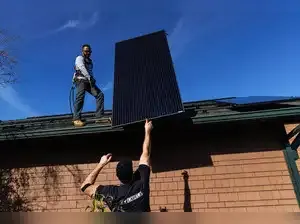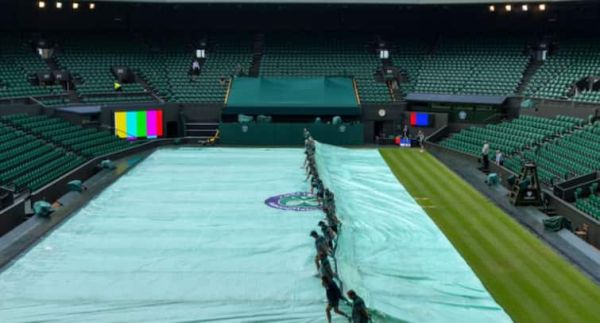Australia’s rooftop solar revolution is entering a new phase. With only 1 in 40 homes currently using solar batteries, the federal government has launched the $2.3 billion Cheaper Home Batteries Program, offering a 30 per cent discount on battery systems to make clean energy storage affordable for households, businesses, and community groups.
The offer is only available for homes with solar panels. However, buyers can still qualify if they install panels and a battery at the same time.
Also Read: Obese and want to lose weight? Wegovy is not the long-term answer, according to leading weight loss surgeon
This new scheme is already driving a huge rise in demand, drawing comparisons to the solar panel boom of the late 2000s.
The national scheme will cut electricity bills, ease pressure on the grid, and expand the success of rooftop solar by helping more people store solar power for when they need it.
With electricity bills rising, prices of batteries still out of reach for many, this subsidy could be a game-changer, but it won’t last forever. Understanding how to choose the right system and maximise savings has never been more important.
The 30 per cent rebate applies to batteries sized between 5 and 50 kilowatt-hours (kWh), and one battery system per home is allowed. There’s no dollar cap; the discount is based on the battery size.
A battery stores extra solar energy during the day, which can be used later, especially in the evening when power use increases. This can cut electricity bills, reduce grid dependence, and offer backup during blackouts.
After the rebate, the cost of a home battery ranges from $9000 to $15,000 for a mid-sized unit (10–15 kWh), which suits most average households.
Smaller systems, like a 5 kWh battery, may cost around $5000, but they often can't store enough energy to last through peak evening use.
Yes, but it may take time. Experts say a well-sized battery can cut power bills by up to $1000 a year, in addition to savings already made from solar panels.
That means it could take 10 or more years to fully recover the upfront cost. But those with larger batteries may get closer to “zero bills” by relying less on the grid.
Some households are tempted to choose smaller batteries for quicker payback. But experts warn this may lead to disappointment.
A small battery might drain before the evening ends, forcing users back onto the grid and higher bills.
“If you want long-term savings, it’s better to invest in a bigger battery that can power your home through the night,” said Finn Peacock (SolarQuotes) to the Sydney Morning Herald.
To boost savings, households can replace gas heating and cooking with electric appliances powered by solar and stored energy.
Using the battery smartly, like pre-cooling or heating the house before peak hours, can also stretch the stored energy further.
Experts also urge homeowners not to forget about insulation and sealing; a well-sealed home can reduce energy waste, improving overall efficiency.
There are over 80 battery models approved for use in Australia, priced from $4000 for 5 kWh units to $15,000 and above for high-capacity options.
Trusted installers can help you assess your power usage and recommend the right system. Independent tools like SunSPOT (developed by the Australian PV Institute) also allow you to calculate savings based on your home’s solar setup.
The Clean Energy Council lists approved battery models, while Solar Citizens provides information on state-level support programs.
The offer is only available for homes with solar panels. However, buyers can still qualify if they install panels and a battery at the same time.
Also Read: Obese and want to lose weight? Wegovy is not the long-term answer, according to leading weight loss surgeon
This new scheme is already driving a huge rise in demand, drawing comparisons to the solar panel boom of the late 2000s.
The national scheme will cut electricity bills, ease pressure on the grid, and expand the success of rooftop solar by helping more people store solar power for when they need it.
With electricity bills rising, prices of batteries still out of reach for many, this subsidy could be a game-changer, but it won’t last forever. Understanding how to choose the right system and maximise savings has never been more important.
How the subsidy works?
The 30 per cent rebate applies to batteries sized between 5 and 50 kilowatt-hours (kWh), and one battery system per home is allowed. There’s no dollar cap; the discount is based on the battery size.
A battery stores extra solar energy during the day, which can be used later, especially in the evening when power use increases. This can cut electricity bills, reduce grid dependence, and offer backup during blackouts.
What does a battery cost?
After the rebate, the cost of a home battery ranges from $9000 to $15,000 for a mid-sized unit (10–15 kWh), which suits most average households.
Smaller systems, like a 5 kWh battery, may cost around $5000, but they often can't store enough energy to last through peak evening use.
Will you actually save money?
Yes, but it may take time. Experts say a well-sized battery can cut power bills by up to $1000 a year, in addition to savings already made from solar panels.
That means it could take 10 or more years to fully recover the upfront cost. But those with larger batteries may get closer to “zero bills” by relying less on the grid.
Avoid going too small
Some households are tempted to choose smaller batteries for quicker payback. But experts warn this may lead to disappointment.
A small battery might drain before the evening ends, forcing users back onto the grid and higher bills.
“If you want long-term savings, it’s better to invest in a bigger battery that can power your home through the night,” said Finn Peacock (SolarQuotes) to the Sydney Morning Herald.
Make the most of your battery
To boost savings, households can replace gas heating and cooking with electric appliances powered by solar and stored energy.
Using the battery smartly, like pre-cooling or heating the house before peak hours, can also stretch the stored energy further.
Experts also urge homeowners not to forget about insulation and sealing; a well-sealed home can reduce energy waste, improving overall efficiency.
Choosing the right battery
There are over 80 battery models approved for use in Australia, priced from $4000 for 5 kWh units to $15,000 and above for high-capacity options.
Trusted installers can help you assess your power usage and recommend the right system. Independent tools like SunSPOT (developed by the Australian PV Institute) also allow you to calculate savings based on your home’s solar setup.
The Clean Energy Council lists approved battery models, while Solar Citizens provides information on state-level support programs.





